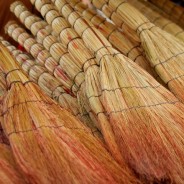Posted by Diane Morrow on May 7, 2007 in Healing Conversation, Recommended Books
[This is a continuation of yesterday’s post on the novel, The Last Chinese Chef, by Nicole Mones, which has just been released.] There’s one passage in particular—a conversation between Maggie and Sam Liang, the chef, that I think fits in especially well during this month in which I’m writing about healing conversation. This particular conversation occurs as one of a series of conversations that they have while Sam is cooking and Maggie is watching him cook. Sam has prepared a chicken, Chinese-style, and he offers some of the chicken to Maggie and she begins to eat the chicken and, as she does so, feels herself begin to “melt with comfort.” She speaks: ”Are you going to make this for the banquet?” “No,” he said. “This I made for you.” She looked up quickly. “These are flavors for you, right now,” he explained, “to benefit you. Ginger and cilantro and chives; they’re very powerful. Very healing.” “Healing of what?” she said, and put her chopsticks down. . . “Grief,” he said. ”Grief?” The unpleasant nest of everything she felt pressed up against the surface, sadness, shame, anger. . . Her voice, when it came out, sounded bewildered. “You’re treating me for grief?” “No,” he insisted, “I’m cooking for you. There’s a difference.” She tried to master the upheavals inside her. She would not cry in front of him. “Maybe you should have asked me first.” “Really?” “It’s a bit difficult for me.” “Well, for that I’m sorry. Forgive me. You’re American and I should have thought of that. Here, this is how we’re trained—to know the diner, perceive the diner, and cook accordingly. Feed the body, but that’s only the beginning. Also feed the mind and the soul.” There. That’s it. I think that’s what Nicole Mones is doing especially well in this book. She’s touched that aspect of culture–of Chinese culture in this case–that feeds the soul. And she’s found a way to translate that into the writing itself—into this novel— There’s a sense in which, in her grief, Maggie, the central character, is longing for a kind of food, a kind of conversation, that she doesn’t even quite know that she’s longing for—until it appears—and then she is able to be comforted by it. Here is how Nicole Mones describes the feeling of comfort that blooms inside Maggie after she eats that chicken: “It put a roof over her head and a patterned warmth around her so that even though all her anguish was still with her it became, for a moment, something she could bear.” . . . even though all her anguish was still with her it became, for a moment, something she could bear. At its best, I think this is what healing conversation–and sometimes healing books–and healing poems–can...
read more

